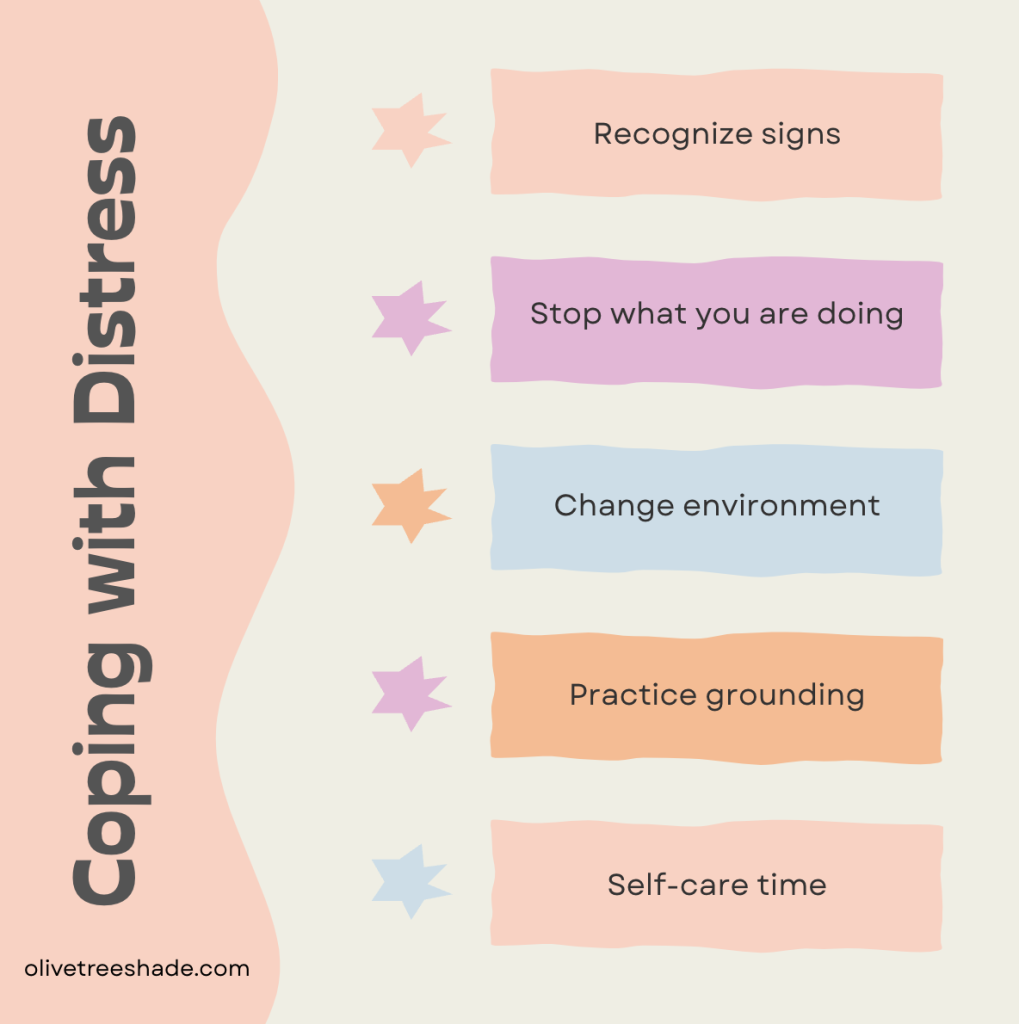Emotional distress can appear suddenly or build gradually, leaving a person feeling overwhelmed, frozen, or disconnected from themselves and the world around them. Developing a clear, step-by-step plan for coping with distress is an essential tool for managing these moments effectively. This plan outlines practical strategies that help bring the body and mind back to safety and balance.

Step 1. Recognize the signs of distress
The first step is learning how to recognize when emotional distress is beginning to take hold. These signs may be physical, emotional, or behavioral, and they often show up before the situation feels out of control. Recognizing them early helps to take action before things escalate.
Examples of distress warning signs:
- Tight chest or shortness of breath
- Shaking, sweating, or feeling cold
- Feeling frozen or unable to think clearly
- Strong urge to escape or hide
- Racing heart or rapid thoughts
- Feeling angry, hopeless, or numb
- Difficulty speaking or responding
Step 2. Pause and stop what you’re doing
When the warning signs are present, the next step is to pause. Give yourself permission to stop engaging in whatever activity may be contributing to the distress. This pause creates a moment of separation from the stressor, allowing time to breathe and reorient.
Examples of how to pause:
- Step away from a stressful conversation or environment
- Sit down and close your eyes for a few moments
- Take a few deep breaths and exhale slowly
- Say to yourself, “I need a moment” or “I am safe right now”
- Remove yourself from screens, sounds, or bright lights
Step 3. Change your environment or position
The environment has a powerful impact on emotional regulation. Changing your physical space or position can help the nervous system feel safer and calmer. Even small changes can have a big effect.
Examples of environmental shifts:
- Move to a quieter or more private space
- Turn down the lights or open a window
- Sit on the floor, lie down, or wrap yourself in a blanket
- Put on calming music or nature sounds
- Adjust temperature—cool down or warm up as needed
- Use grounding techniques to stay present
Step 4. Grounding brings attention away from distressing thoughts or memories and into the here and now. These techniques help anchor the senses, connect to the body, and reduce panic or dissociation.
Examples of grounding methods:
- Breathe slowly and count each inhale and exhale
- Hold something cold or textured, like an ice cube or rock
- Name five things you see, four you touch, three you hear, two you smell, one you taste
- Clap your hands, stomp your feet, or tap your body gently
- Describe your surroundings out loud in detail
Step 5. Practice self-care to recover
Once the distress has passed or started to ease, the body and mind need time to recover. Practicing self-care at this stage supports emotional regulation, helps replenish energy, and strengthens the ability to cope next time.
Examples of self-care after distress:
- Take a warm shower or bath
- Wrap up in a blanket and rest or nap
- Cuddle a pet or talk to a comforting friend
- Write or draw what you’re feeling
- Listen to soothing music or drink a warm beverage
- Light a candle or use calming scents
- Spend time in nature, or simply sit in the sun

In conclusion
Coping with emotional distress is not about pretending everything is okay—it’s about building tools that help create safety from within. By following this plan—recognizing the signs, pausing, changing your environment, grounding, and practicing self-care—you give yourself a structured and compassionate way to navigate difficult moments. Keep this plan somewhere visible or accessible so it can serve as a reliable guide when you need it most.
